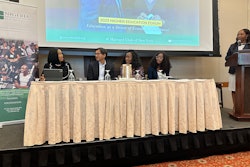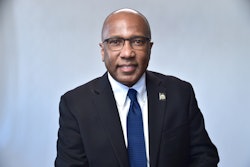American colleges and universities have made significant gains in becoming more international in scope, but the progress has hardly been universal and varies by sector, a new survey released Wednesday by the American Council on Education, or ACE, has found.
Officials at ACE say the survey — titled “Mapping Internationalization on U.S. Campuses: 2012 Edition” — identified several trends that are encouraging but also turned up some, such as the long and steady decline in foreign language instruction, that give reason for concern.
“The overall picture is quite mixed,” Patti McGill Peterson, presidential adviser for global initiatives at ACE, said during a teleconference Wednesday around the release of the report.
“We don’t want to paint a rosy picture by focusing only on positive developments,” Peterson said. The reality is some campuses have witnessed no change or even lost ground in their internationalization efforts, she said.
One of the most encouraging signs is that most campuses have invested more in internationalization efforts — or at least maintained what they were spending — at a time when fiscal constraints continue to take a toll on campus finances, Peterson said.
Specifically, at institutions that reported an accelerated focus on internationalization since 2008, funding for these efforts increased among 47 percent of survey respondents and remained steady among 27 percent.
“That’s pretty phenomenal at a time when colleges and universities are really being challenged economically and what it means for their budgets,” Peterson said.
The survey sought not only to gauge the extent to which campus officials perceived that their institutions were becoming more international, but to examine the extent to which those perceptions were rooted in reality.
“Overall, survey respondents perceive that internationalization has accelerated on their campuses in recent years,” the survey states.
This was the case, the survey states, for 93 percent of doctoral institutions, 84 percent of master’s institutions, 78 percent of baccalaureate institutions, and roughly half of all two-year degree and special focus institutions.
Another one of the more upward trends involved how many institutions were formally assessing the impact or progress of their internationalization efforts. Specifically, the survey found that after declining from 34 to 30 percent between 2001 and 2006, the percentage of institutions formally assessing their internationalization efforts shot back up to 37 percent in 2011.
“This is a positive trend,” said Lindsay Addington, senior program specialist, ACE Center for Internationalization. “This can reinforce articulation commitments by framing specific goals and holding institutions accountable for accomplishing them.”
In seeking to establish whether campus perceptions of internationalization were supported by facts, ACE looked at a variety of indicators, from whether a campus had an articulated institutional commitment to internationalization to administrative staffing and structure.
Some key findings include:
1) 51 percent of all institutions indicated that their mission statements refer to international or global education. However, there was wide variation on affirmative answers to these questions by sector, with 80 percent of doctoral institutions answering affirmatively, versus just 40 percent of all associate institutions.
2) The percentage of institutions with a campus-wide internationalization plan increased from 23 percent in 2006 to 26 percent in 2011. On a related matter, 44 percent of institutions stated having a task force or committee that works strictly on advancing internationalization on campus.
3) The percentage of institutions that require undergraduates to take courses that feature global trends and issues rose from 24 percent in 2006 to 28 percent in 2011. However, the percentage of institutions that require undergraduates to take courses that primarily feature perspectives, issues, or events from countries or areas outside the United States decreased from 37 percent to 29 percent across all sectors.
4) The percentage of institutions with an undergraduate foreign language requirement for graduation has steadily declined over time across all sectors. In 2001, for instance, an average of 53 percent of all institutions had such a requirement. Today the figure stands at 37 percent.
The decline in language studies and required courses that focus primarily on perspectives, issues or events outside the United States is cause for concern, Peterson said.
“That means we really need to think about the impact on students,” Peterson said.





















